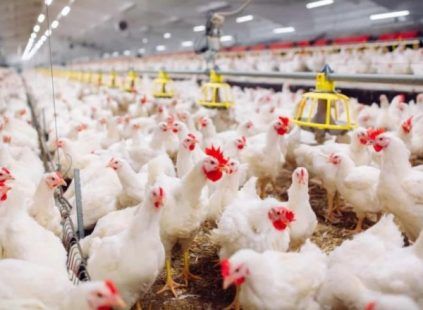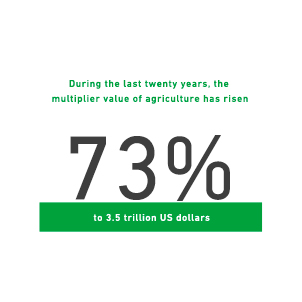The project involves establishing a broiler chicken farm to raise poultry using the best types of feed for fattening chickens and employing approved medicines and vaccinations for the poultry.

The project involves setting up a poultry farm for broiler chicken production, using the best types of feed for fattening the poultry and employing approved medicines and vaccinations for this field. The farm will also establish hatcheries and sell the poultry wrapped and packaged by creating a slaughterhouse for slaughtering, cleaning, and packaging the chickens, followed by distribution to target sectors using dedicated delivery vehicles. The slaughterhouse will have refrigeration and freezing capabilities, which allows for marketing beyond a specific time period, enabling the transportation of the production to distant regions and selling it after a longer period of time.<br>The project targets various sectors, including refrigeration and freezing storage, individuals, poultry shops, supermarkets, hypermarkets, hotels, serviced apartments, hospitals, clinics, and other sectors.<br>The farm will operate using the best technologies and the highest quality standards to compete with local producers of the studied products, meeting the increasing demand and consumption of white meat and eggs. Broiler chicken projects are vital and strategic in the field of food security due to the strong demand for white meat by various groups of citizens and residents. This broiler chicken project is one of the most promising opportunities worthy of attention.



Complete attention to the quality of the produced poultry
Thorough examination and testing of poultry before sale
Selection of high-quality and premium feed for poultry fattening
Presence of an experienced and skilled medical and technical team
Careful selection and inspection of chicks before purchase
Ensuring chicks come from hatcheries monitored by the relevant authorities
Choosing chicks with suitable weight and uniformity
Consistent attention to farm maintenance, cleanliness, and care for the hatcheries
Monitoring temperature, ventilation, and feeding for the raised poultry
Executive summary
Study project services/products
Market Size Analysis.
Risk Assessment.

Agricultural production sector in the GCC countries
There is no doubt that the agricultural sector is of great importance today in the world’s economies; as it helps achieve self-sufficiency and food security, reduces the spread of unemployment and alleviates the burden of poverty, and is the main source of raw materials for many manufacturing industries. This vital sector employs about 935.6 million workers, representing 28.3% of the global workforce.
Global agricultural production sector
Over the past 20 years, the added value of agriculture has increased by 73% to reach US$3.5 trillion.
Agriculture accounts for 4% of global GDP.
Agriculture employs 874 million people, representing about 27% of the world’s total workforce.
4.8 billion hectares is the total agricultural area in the world, divided into (3.2 billion hectares of meadows and pastures and 1.6 billion hectares of crops).
The total global production of primary crops is 9.4 billion tons.
The total global production of red and white meats is 337 million tons.
The total global production of fruits is 883 million tons.
The total global production of vegetables is 1,128 million tons.
The total global production of vegetable oils is 201 million tons.
The total global production of dairy is 883 million tons.
The total global production of eggs is 83 million tons.

According to the Food and Agriculture Organization of the United Nations (FAO), hunger is on the rise, with the number of undernourished people worldwide rising to 770 million; a large number that we hope agriculture and its products will help reduce. It is noteworthy that agricultural land around the world decreased by 127 million hectares between 2000 and 2019 (roughly the size of Niger), while forest area decreased by 94 million hectares (the size of the United Republic of Tanzania) during the same period. These numbers are undoubtedly somewhat unsettling, especially since the world’s population is increasing; therefore, Mashroo3k supports investment under the umbrella of the agricultural sector in order to keep pace with the demand for food.